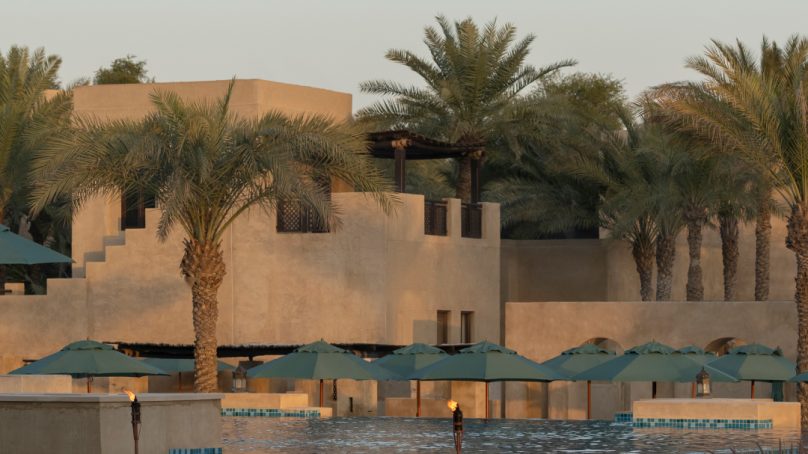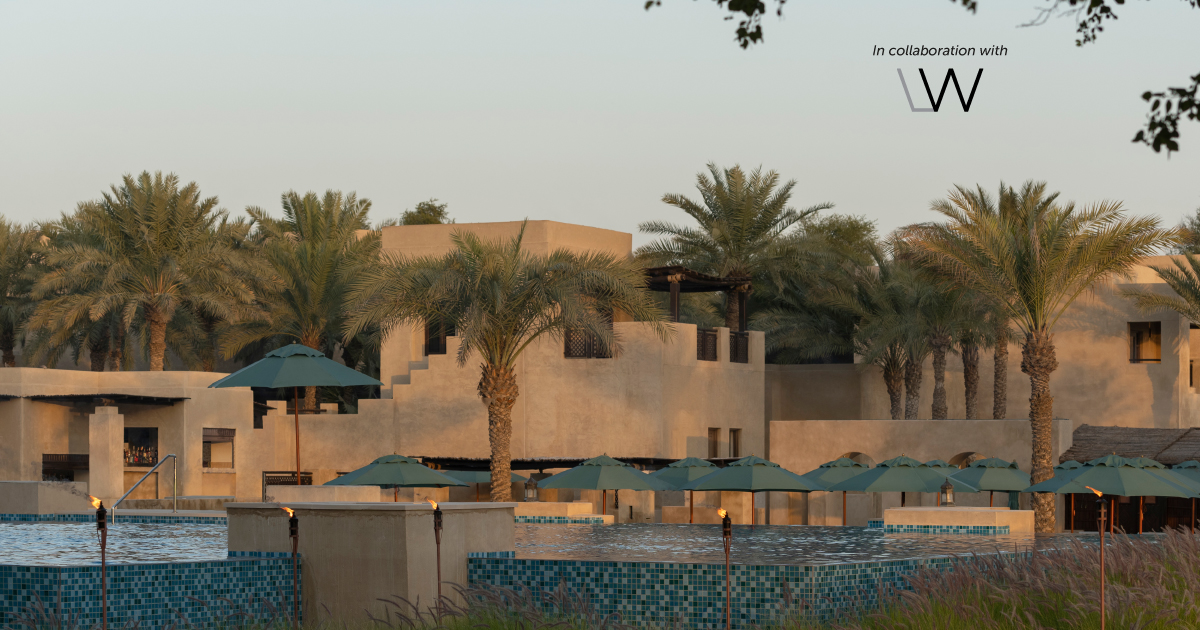

The luxury hospitality industry is currently undergoing a significant transformation toward sustainability and environmental stewardship. A movement referred to as ‘resort rewilding’ is redefining the very essence of luxury travel. This paradigm shift is driven by a growing global consciousness about the impact of climate change and the crucial role the tourism industry plays in both contributing to and alleviating these impacts. Luxury hotels, once seen as symbols of excess, are now becoming pioneers in eco-friendly practices, focusing on ecological harmony and climate change mitigation, profoundly altering the traditional concept of high-end resorts.
A time for re-evaluation
As global awareness of environmental issues grows, resort rewilding represents a major departure from the traditional concept of high-end resorts. Today’s travelers increasingly seek experiences that align with their environmental values, prompting a re-evaluation of what luxury means in the context of travel and accommodation. Where once the luxury travel experience was defined by lavish amenities and seclusion from the outside world, the emphasis has now shifted to establishing a deep connection with nature and a commitment to preserving it. This redefinition is not just about the physical redesign of spaces, but also reflects a deeper, ethical commitment to the planet and its future.
A return to nature
Rewilding in the context of resort design is a groundbreaking approach that seeks to harmonize the built environment of luxury hotels with the natural world. At the core of this approach is the aim to restore and revitalize natural habitats that have been altered or diminished by human activity. By reintroducing native flora and fauna, which provide essential habitats for local wildlife, support pollinators and contribute to the overall health of the ecosystem, resorts can help to reverse the loss of biodiversity, making a functional return to the ecological roots of the landscape.
Minimizing environmental impact
Drawing from the adaptable qualities of wildlife, where animals harmonize their actions and habitats to leave a minimal footprint, rewilding focuses on eco-friendly and low-impact methods. This includes the adoption of green construction techniques and materials, the efficient use of renewable energy sources, such as solar and wind power, water conservation systems and re-evaluated waste management practices to ensure minimal environmental impact. The design of these spaces often features organic shapes and earth tones, moving them beyond simply existing alongside nature to actively contributing to its care and improvement. This approach can be realized through a range of tactics, such as establishing wildlife corridors within the resort, employing landscaping that encourages the proliferation of indigenous plants and initiating programs dedicated to the conservation of local flora and fauna.
NEOM: leading by example
An exemplary model of this innovative design philosophy is NEOM’s The Future of Nature concept. Aligned with COP27’s global objectives, NEOM is dedicated to creating a sustainable future by focusing on the rewilding and restoration of its lands and seas, protecting 95 percent of its area for nature. This effort is part of recognizing natural capital, including environmental, social and economic benefits, as its most valuable asset. NEOM’s comprehensive strategy involves a climate-first approach, leveraging collaborations with experts and investing in clean energy generation, zero waste desalination and advanced manufacturing. Emphasizing renewable energy sources like solar, wind and green hydrogen, and introducing innovative energy storage solutions, it aspires to be a model of sustainable society and economy, demonstrating regenerative development and circular economy principles. This holistic approach aims to address environmental challenges, while fostering a thriving, sustainable community.
NEOM’s rewilding efforts across projects like Sindalah Island, The Line, Trojena and Oxagon showcase a commitment to sustainable development and environmental conservation. Sindalah Island is designed as a luxury destination that preserves the Red Sea’s marine ecosystems. The Line, a 170-kilometer cognitive city, will operate on 100 percent renewable energy, with 95 percent of its land preserved for nature, offering residents immediate access to diverse natural spaces. Trojena, a mountain resort, is integrated into the natural landscape, emphasizing sustainable city development and harmony with the environment. Oxagon focuses on building an advanced, clean industrial ecosystem with a key emphasis on sustainability and circularity. Each of these projects reflects NEOM’s vision of blending advanced urban development with a deep respect for nature, setting new standards in eco-friendly innovation.
Rewilding’s broader rewards
While environmentally beneficial, resort rewilding also has significant economic implications. The development and maintenance of such resorts create new job opportunities, particularly in remote areas. Additionally, these resorts attract a niche market of eco-conscious travelers, tapping into a growing demand for sustainable luxury travel. The involvement of local communities is integral to the rewilding process. By employing local artisans and using native materials, these resorts help sustain local economies. Furthermore, they often engage in community projects and environmental education, fostering a deeper connection between the resort, its guests and the local community.
Admittedly, resort rewilding is not without its challenges. The higher costs of sustainable materials and construction, along with the need for ongoing research and development, pose significant hurdles. However, these are balanced by the long-term benefits of sustainability, both environmentally and economically.
Meeting guests’ changing demands
Resort rewilding is emerging as a defining force in the luxury travel sector, signaling a substantial transformation in how we perceive and experience high-end travel. In a world increasingly conscious of environmental issues, the demand for travel experiences that offer both luxury and sustainability is on the rise. This evolving trend foretells a future where luxury travel is inherently linked with ecological guardianship. It represents a significant shift in the hospitality industry, where luxury and sustainability are no longer seen as opposing concepts but as complementary facets of a holistic travel experience.
This approach signifies more than just a change in services or amenities; it embodies a profound shift in ethos. Luxury resorts are now adopting practices that prioritize ecological balance, from using sustainable building materials to creating habitats for local wildlife. This transition is not only a response to growing environmental concerns but also a proactive step toward preserving our planet for future generations.
The implications of this shift are far-reaching. It not only contributes to the fight against climate change but also enhances the quality of the travel experience. Guests can now enjoy opulent surroundings while being reassured of their minimal environmental impact. This new paradigm in luxury travel is setting a precedent, demonstrating that indulgence and environmental consciousness can exist in harmony. It’s a promising development, pointing toward a future where luxury hospitality plays a crucial role in promoting sustainability and environmental awareness.

Casey T. Carillo,
interior designer at LW,
@lw.designgroup













